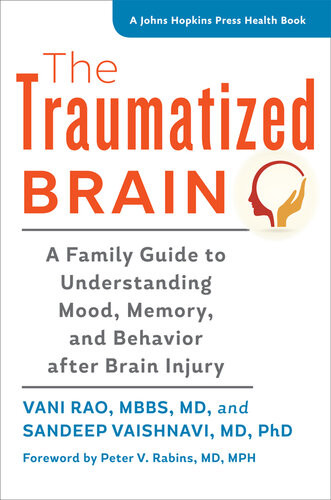

Most ebook files are in PDF format, so you can easily read them using various software such as Foxit Reader or directly on the Google Chrome browser.
Some ebook files are released by publishers in other formats such as .awz, .mobi, .epub, .fb2, etc. You may need to install specific software to read these formats on mobile/PC, such as Calibre.
Please read the tutorial at this link: https://ebookbell.com/faq
We offer FREE conversion to the popular formats you request; however, this may take some time. Therefore, right after payment, please email us, and we will try to provide the service as quickly as possible.
For some exceptional file formats or broken links (if any), please refrain from opening any disputes. Instead, email us first, and we will try to assist within a maximum of 6 hours.
EbookBell Team

5.0
20 reviewsUseful information and real hope for patients and families whose lives have been altered by traumatic brain injury.
A traumatic brain injury is a life-changing event, affecting an individual's lifestyle, ability to work, relationships—even personality. Whatever caused it—car crash, work accident, sports injury, domestic violence, combat—a severe blow to the head results in acute and, often, lasting symptoms. People with brain injury benefit from understanding, patience, and assistance in recovering their bearings and functioning to their full abilities.
In The Traumatized Brain, neuropsychiatrists Drs. Vani Rao and Sandeep Vaishnavi—experts in helping people heal after head trauma—explain how traumatic brain injury, whether mild, moderate, or severe, affects the brain. They advise readers on how emotional symptoms such as depression, anxiety, mania, and apathy can be treated; how behavioral symptoms such as psychosis, aggression, impulsivity, and sleep disturbances can be addressed; and how cognitive functions like attention, memory, executive functioning, and language can be improved. They also discuss headaches, seizures, vision problems, and other neurological symptoms of traumatic brain injury.
By stressing that symptoms are real and are directly related to the trauma, Rao and Vaishnavi hope to restore dignity to people with traumatic brain injury and encourage them to ask for help. Each chapter incorporates case studies and suggestions for appropriate medications, counseling, and other treatments and ends with targeted tips for coping. The book also includes a useful glossary, a list of resources, and suggestions for further reading.